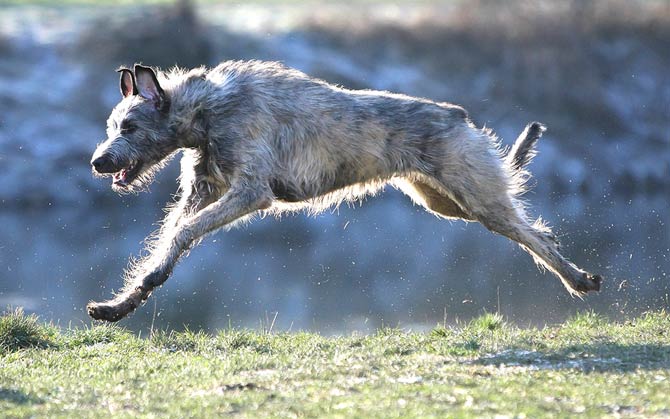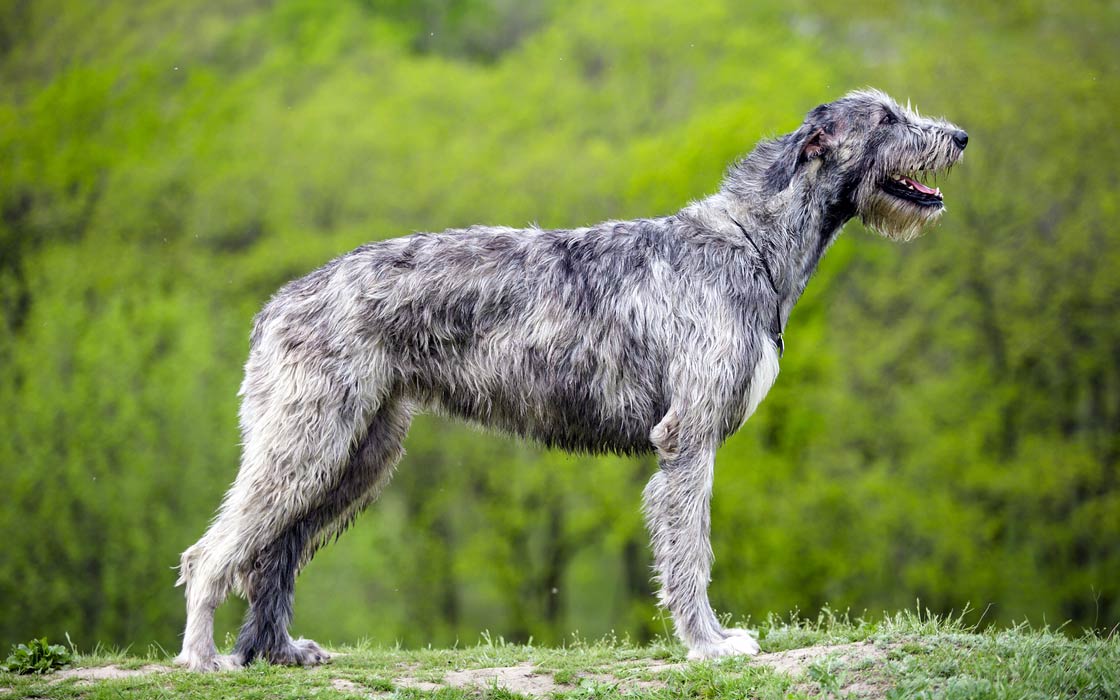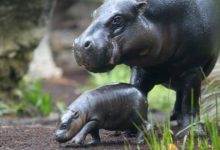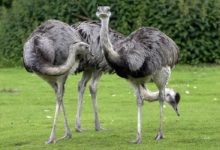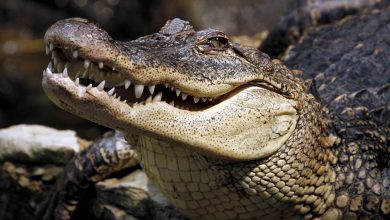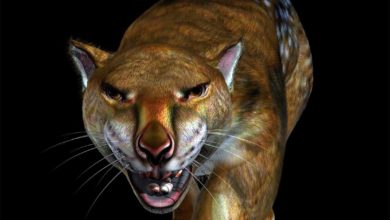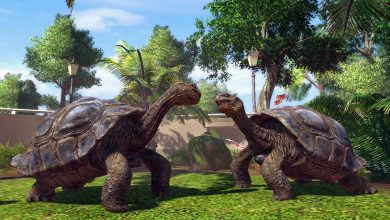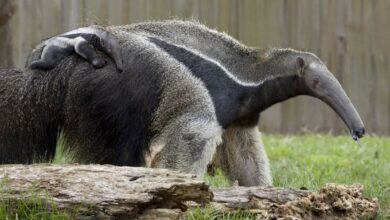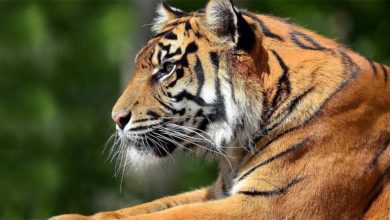Irish Wolfhound
The Irish Wolfhound can reach the waist of an adult male, but despite its size, it does not exalt itself. Although it has the instinct of an independent hunter, it can love an owner and look after him like a guardian angel. So what more could you possibly want from man’s best friend?
Classifications FCI
- Group 10 Sighthounds
- Section 2 Rough-haired Sighthounds
- Without working trial
- Unofficial national dog breed of Ireland
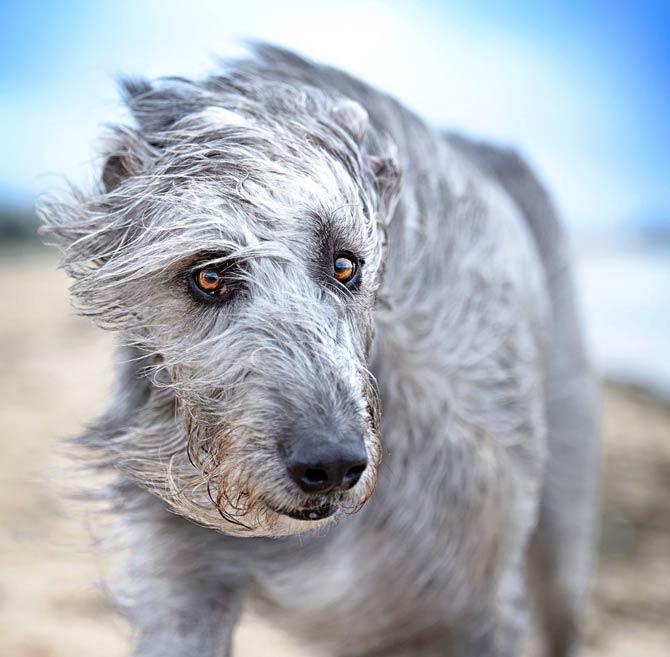
The origin of the breed
There are suggestions that this very old breed was introduced to Ireland around 7000 BC. In Irish law and literature dating back to the 6th century, they were referred to as Cú Faoil (“hound” / “wolf” / “wolfhound”, etc.). The prefix cú was applied to the names of respected warriors and respected and loyal kings.
Based on the writings found, it has been established that the race already existed in 273 BC, and perhaps even in 600 BC, in the times of the Celtic Wolves and Tolistobogii. The Celts who survived the raids fought fiercely with the invaders along with the large dogs. Julius Caesar himself also mentions them in the treatise “The Gallic War” written in the 4th century CE.
Wolfhounds were bred for hunting purposes, and the peoples of today’s Ireland called them Cu Faoil. To this day, the Irish breed them for hunting, protection and guard dogs. During the conquest of Ireland by the English, wolfhounds became very popular with the nobility. They were often given as gifts to important personalities and foreign dignitaries.
In the “Historie of Ireland” (1571) written by Saint Edmund Campion in the 16th century, there was a description of the dogs used during hunting wolves in the Wicklow mountains. The author also noted the fact that the highly popular wolfhounds were massively exported to other European countries as members of royal houses. This practice led to a sharp decline in the Irish Wolfhound population, so Olivier Cromwell had to publicly assure himself that the remaining number of dogs of this breed was sufficient to control the wolf population.
The man who dedicated his life to the revival of the breed in Ireland and England was the 19th-century captain George August Graham. However, since there were not enough purebred dogs to recreate them, Graham crossed Irish wolfhounds with a Borzoi, Great Dane, Scottish Deerhound and English Mastiff. In 1885, Captain Graham, along with other breeders, finally founded the breed club and set the standard for the breed.

Characteristic
Appearance
Standards define the Irish Wolfhound as a large and imperious looking dog. It combines strength, speed and keen eyesight, and is also counted among the largest purebred dogs. It resembles a greyhound, but it is more muscular, stronger, yet graceful. Its movements are smooth and expressive, it carries its head and neck high, the tail is slightly curled up, of medium thickness, very hairy. Chest broad and deep, color may be gray, brindle, red, black, white, fawn, wheat or steel.
In general, all coat colors similar to a Scottish Deerhound are accepted by the FCI. The hair itself, on the other hand, is rough and hard on the body, head and limbs, over the eyes and under the jaw, even wiry. Eyes dark, medium-sized, ears carried like a Greyhound.
The average height at the withers should be greater than the Great Dane, but it is not the heaviest dog, as it is similar in structure to light Greyhounds or Afghan Hounds.
The wolfhound was bred to be a large independent hunter, whose hunting methods are based solely on eyesight, which clearly distinguishes him from Beagle or Polish Hunting Dog, working mainly on the basis of the sense of smell, this is why the wolfhound walks with its head raised, most of the time. As a wolf hunting dog, it should be fast enough to catch a wolf and strong enough to kill it.
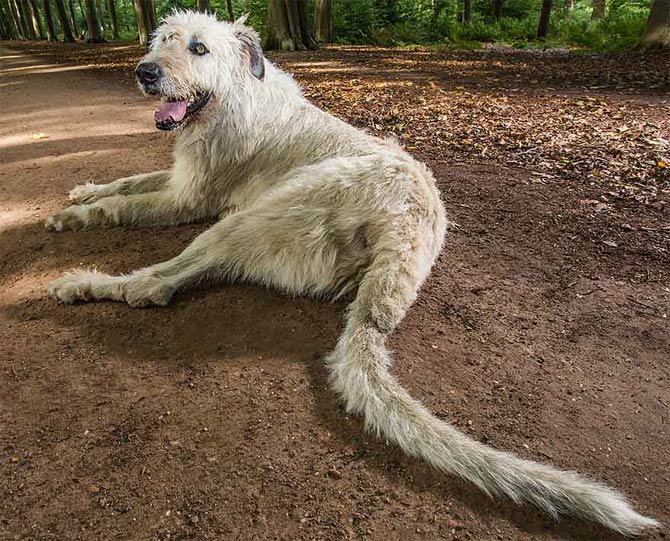
Temperament
Irish Wolfhounds are dogs with a diverse personality, within the breed we meet the most individualists and even weirdoes. However, it rarely works thoughtlessly and, despite its size, does not damage houses or make noise. Perhaps the reason for this gentleness is introversion, high intelligence and restraint.
It often creates a strong bond with family members, therefore, when it stays alone for a long time, it feels strongly depressed and displays destructive behavior. It can defend a man, but it is not very suitable as a defender of the entire property. Famous for its independence, it does not show a territorial instinct, so it is described as a gentle animal when petted, but dangerous when provoked by someone.
Although it needs the presence of close people, it treats strangers dryly, but not aggressively. Relative to other domestic dogs, it should not show territoriality or anger, but as a hunting dog, it is endowed with special abilities that it can demonstrate on a canine roommate while playing. This is mainly about hunting-like behavior (not dominance or terrain).
Irish Wolfhounds seem to be rather gentle with children and easy to groom. They respond well to a strong, yet gentle and consistent owner. It should be remembered, however, that in the past these dogs were needed for work that required being away from their master, so they had to make decisions on their own during hunting, therefore even today this independence is observed (especially when the dog acts without waiting for detailed commands).
The modern representatives of the breed differ significantly from the ancient ancestors who sowed fear in the hearts of the Romans. Today Irish Wolfhounds are selected for their loyalty, love, patience and dedication. Although they have been used as guards in the past, they are not very suited to this role, as they do not show aggression towards strangers; the only deterrent in this situation is the size of the dog. When the dog finds that its family members are in danger, it shows its fearlessness.
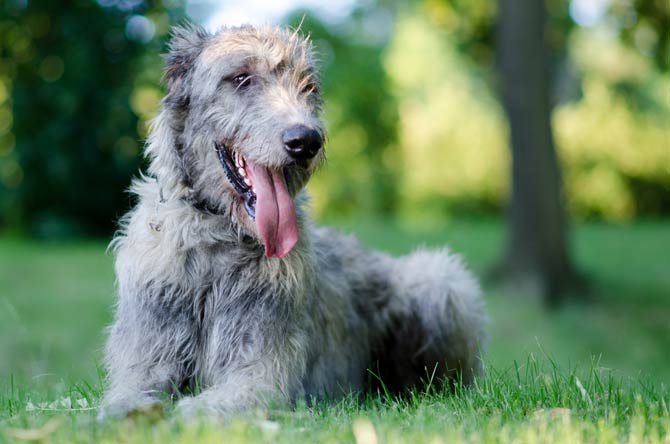
Health condition
As a very large breed, Irish Wolfhounds live rather short – 6-10 years (average 7). Dilated cardiomyopathy, bone cancer, gastric torsion (bloat) and hereditary portal anastomosis are considered the main causes of death (the liver does not purify and detoxify the blood, which leads to the intoxication of the body).
It is recommended that Irish Wolfhounds do not receive additional nutritional supplements if they eat good dog food. It is assumed that the protein content of the diet should be low to slow down the rapid growth process. Within the breed, there is the so-called bottleneck effect (similar to the founder effect, which occurs due to population reduction, leading to a reduction in gene pool diversity), related to the breeder effect.

Detailed data / dimensions (size)
Irish Wolfhound
- Height at the withers:
- males: 80 – 90 cm (32 – 35 in)
- females: 71 – 85 cm (28 – 33 in)
- Weight:
- males: dogs: min. 54.5 kg (120 lb)
- females: min. 40.5 kg (89 lb)
- Lifespan: 6 – 10 years (7 years on average)
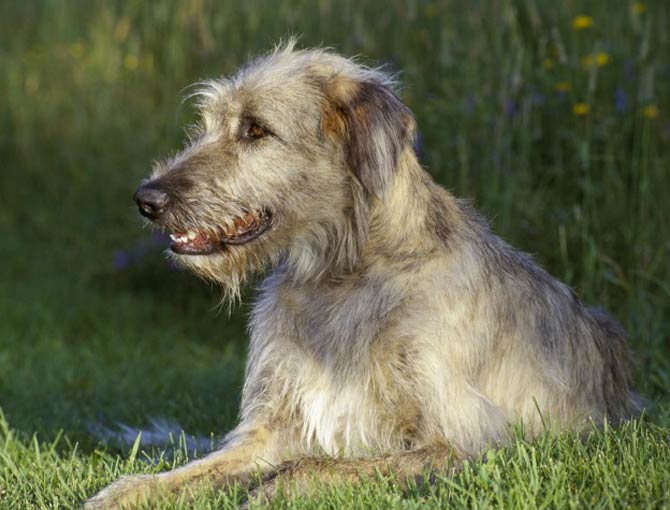
Irish Wolfhound – interesting facts
Name
The name “wolfhound” comes from the function the dog was supposed to perform (hunting wolves), not from the appearance.
The tallest purebred dog in the world
As a breed, the Irish Wolfhound is the tallest dog – standing on its hind legs can measure up to 2 meters (6.5 ft).
Good guardian
Irish Wolfhound breeder and writer Linda Glover believes that these dogs are closely related to humans, which makes them understand a lot and are sensitive to the ill will and malicious intentions of others. Consequently, they are excellent protectors of people.
The dog with the longest tail
The Irish wolfhound named Keon has the longest tail among dogs. The length of its tail is 76.8 cm (30 in).
